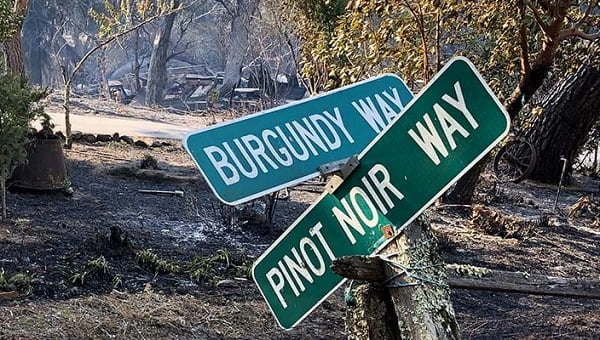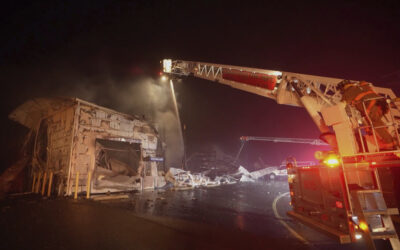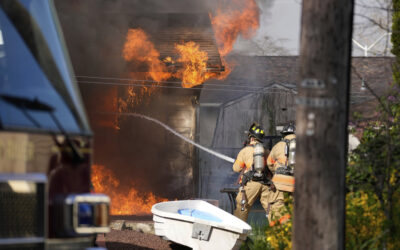A national address point database has the potential to improve modeling

(United States Fire Administration)
United States Fire Administration
Longer fire seasons and expansion of communities into wildfire prone areas has led to an increased risk to life and property in the wildland urban interface (WUI). A national address point database could potentially be of value to incident commanders and emergency managers during wildfire evacuations by allowing for more precise mapping and evacuation modeling/zones, and improved information sharing.
The increased risk to life and property is exemplified in California where the Tubbs and Camp Fires recently destroyed thousands of structures and caused over 100 deaths.
When a wildfire moves towards a community, incident commanders issue protective action recommendations about whether to evacuate or shelter based on factors like wildfire speed and direction, location of at-risk population, and evacuation routes. Address point data contains both the textual address name and the georeferenced coordinates of an address. It may be the key to managing these decisions.
Address point data is successfully used in Australia to build modern wildfire evacuation systems. However, the United States does not have a complete national address point database.
Address Point Data in the U.S.
Address point data is developed and maintained in large part at the local level. This means that the database schema used in one county may differ from its neighbors or differ in quality and scope. This can seriously impede interoperability during events that cross jurisdictional lines.
There are currently two ongoing efforts to develop a national address point database. These projects are not complete, but they have great potential.
National Address Database
The U.S. Department of Transportation (DOT) is working with 30 state and local partners to develop a public national address database (NAD) that uses a rich set of attributes for its schema. It uses the ESRI ArcGIS data format and has over 48 million address point records. DOT sees many potential applications for this database including Next Generation 911, mail delivery, permitting and school siting.
Open Addresses project
The Open Addresses project hosted on GitHub is a free and open data initiative. It has 128 contributors. So far, this platform covers about 65% of the land area and 82% of the population in the U.S. However, the data in this crowd-sourced system is not always of uniform quality and can sometimes lack essential textual address information or other important metadata.
Applications for Address Point Data in Wildfire Evacuations
WUI mapping
Address point data can improve WUI mapping through direct measurement of household density or used in combination with census block data. It would be more precise than current mapping methods and useful for wildfire evacuation planning and mitigation applications.
Wildfire evacuation warning and zoning – household level warning systems
Address point data can be used to issue tailored protective action recommendations to specific at-risk households. It could also be used with computer models, e.g., wildfire spread models, protective action trigger models, etc., and other open data initiatives such as LANDFIRE for evacuations. Address point data could also be used to facilitate a safer and more timelier re-entry process for evacuees.
Wildfire evacuation traffic simulation
Address point data would allow for much more accurate modeling of the spatial distribution of the evacuee population. Currently, evacuation modelers must invest a lot of time into collecting address point data from city/county governments. The data from these disparate sources are not always consistent and interoperable. A common, national address point database would greatly aid evacuation traffic simulations for wildfires as well as for other hazards such as hurricanes.
House loss assessment and notification
Public safety officials could deliver news to evacuees more readily about the potential impacts of a wildfire on their property. Aerial photographs from satellites, planes or drones can be used with the address point database to provide timely and accurate damage assessments at the household level.
Further Reading
Radeloff, V. et al. (2018). Rapid growth of the US wildland-urban interface raises wildfire risk. Proceedings of the National Academy of Sciences: Vol 115 (13) (March 27, 2018. doi:10.1073/pnas.1718850115
Li, D., Cova, T. J., & Dennison, P. E. (2015). A household-level approach to staging wildfire evacuation warnings using trigger modeling. Computers, Environment and Urban Systems, 54, 56-67.
Cova, T. J., Dennison, P. E., Li, D., Drews, F. A., Siebeneck, L. K., & Lindell, M. K. (2017). Warning triggers in environmental hazards: who should be warned to do what and when? Risk analysis, 37(4), 601-611.




